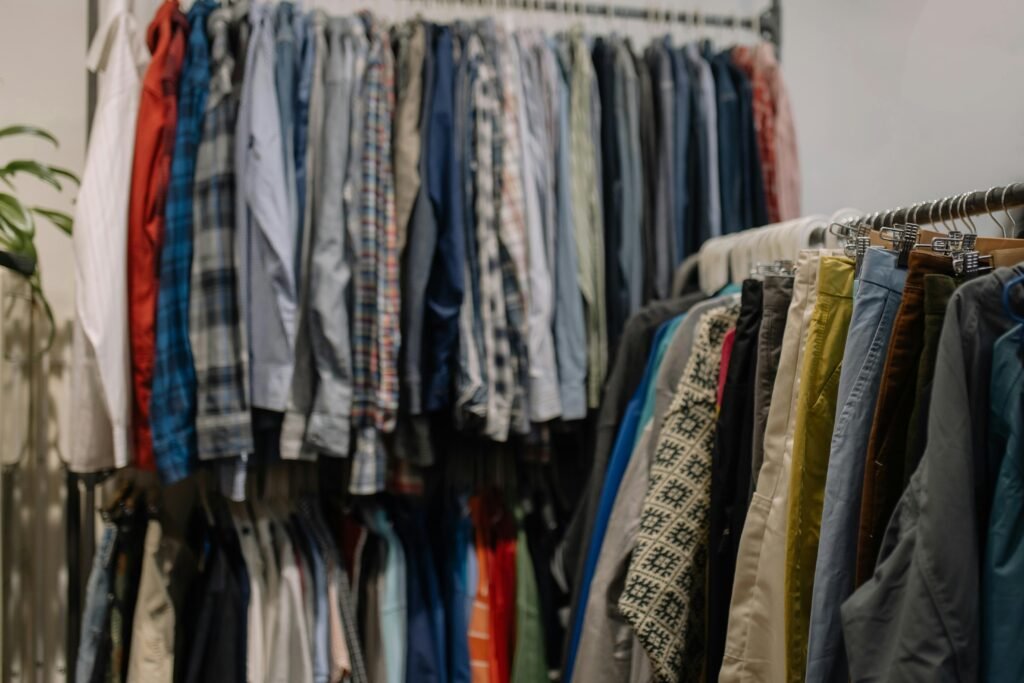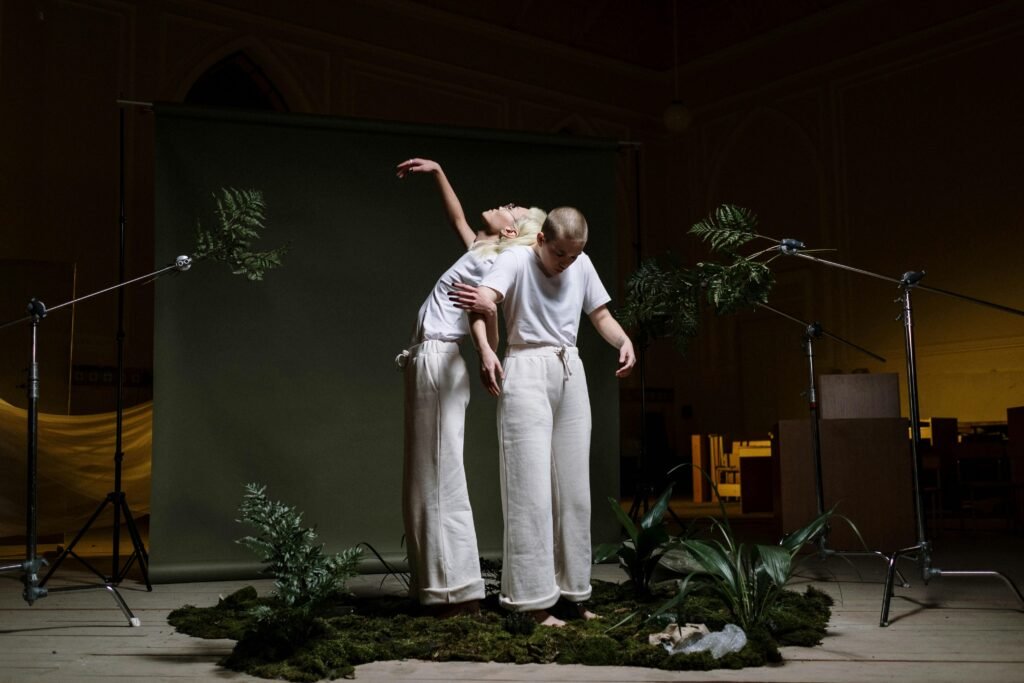People often think that sustainable fashion is dull, uninteresting, or just ugly when they hear the phrase. For far too long, the prejudice that eco-friendly apparel cannot coexist with style has persisted. Is it real, though? Not at all! Sustainable fashion has the potential to be at least as stylish, imaginative, and alluring as popular trends. In fact, by fusing innovative design with environmental responsibility, it has begun to reinvent the industry.
This blog examines how sustainable fashion has overcome its negative connotations to become a dynamic, cutting-edge movement. We’ll look at its history, creative methods, and ways it’s evolving into the pinnacle of sustainability and elegance.
The Evolution of Sustainable Fashion
The Origins
Stylish and sustainable clothes were not always the same thing. In its early years, utility and environmental effect were given precedence above aesthetics. Designers frequently used raw materials, such as hemp and organic cotton, with an emphasis on biodegradability and durability. Although these initiatives set the groundwork for an environmentally conscious sector, their design was far from ideal.
The outcome? Clothes that were functional yet boring. The loose, form-fitting clothing in muted colors made sustainable fashion seem “ugly.” For years, those who cared about fashion were discouraged from really embracing it because of this notion.
The Modern Revolution
In the present day, the terrain has undergone significant transformation. Compromise is no longer an option for sustainability. Rather, it’s about ingenuity, pushing limits, and questioning accepted fashion conventions.
Designers and companies are now aware of how important aesthetics are in motivating customers to embrace sustainable practices. Thanks to developments in materials and technology, sustainable fashion has not only surpassed popular trends but is now setting them.

How Sustainable Fashion Combines Ethics and Aesthetics
1. Innovative Materials
The creation of novel, environmentally friendly materials is largely responsible for the growth of sustainable fashion. Today’s designers have access to materials that blend comfort, adaptability, and a sumptuous feel with environmental responsibility.
Eco-Friendly Basics: Sustainable textiles are being redefined by materials like Tencel and organic cotton. They are perfect for making fashionable, wearable apparel that feels as beautiful as it looks because of their softness and breathability.
Recycled Wonders: Thanks to developments in textile recycling, items such as used clothing and plastic bottles may now be transformed into elegant, premium textiles. These developments provide long-lasting alternatives that are competitive with conventional fabrics while also reducing waste.
Nature-Inspired Alternatives: Plant-based materials such as mushroom leather and pineapple fiber (Piñatex) are being used creatively in sustainable design. These cutting-edge materials provide the appearance and performance of conventional leather without the negative effects on the environment or moral dilemmas.
These materials have increased the potential for sustainable fashion by enabling designers to produce clothes that are both environmentally beneficial and aesthetically pleasing.
2. Cutting-Edge Design
Simple, uninspiring designs are no longer the norm in sustainable fashion. In terms of originality and style, it currently rivals and occasionally outperforms mainstream fashion. In order to elevate sustainability to the forefront of contemporary trends, designers are fusing daring, creative aspects with cutting-edge processes.
Bold Statements: Sustainable apparel is being given individuality and flare via the use of vibrant patterns, dynamic designs, and rich textures, demonstrating that sustainability need not be subdued.
Timeless Appeal: Creating a wardrobe that endures requires minimalist designs with crisp lines and muted colors. These designs prioritize quality above fads, stressing adaptability and elegance.
Artistic Experimentation: Designers are pushing boundaries with unique silhouettes, asymmetrical cuts, and layered styles. These experimental approaches highlight the creative potential of sustainable fashion, breaking away from traditional design norms.
By combining innovative materials and boundary-pushing designs, sustainable fashion is shaking off old stereotypes and establishing itself as a leader in both style and ethics.
The Role of Technology in Stylish Sustainability
A major factor in the transformation of sustainable fashion is technology. Technological developments have made it simpler for businesses to produce fashionable apparel without sacrificing ethics, both in terms of production procedures and design creativity.
3D Printing: Designers can produce complex patterns and forms with little waste thanks to 3D printing technology. It’s very helpful for creating experimental clothing and accessories.
AI-Assisted Design: AI is assisting designers in minimizing fabric waste, optimizing patterns, and forecasting trends.
Biodegradable Dyes: Although conventional dyeing techniques are well known for their negative effects on the environment, new developments in natural and biodegradable dyes are enabling the creation of vivid, long-lasting hues without endangering ecosystems.
Thanks to these innovations, sustainable fashion has been able to get past its stigma as “ugly” and into the high fashion sphere.
Affordability and Accessibility
The idea that sustainable fashion is costly is another prevalent misconception. There are many reasonably priced solutions accessible, even if some manufacturers do cater to luxury markets. Stores like Everlane, Pact, and H&M’s Conscious Collection provide reasonably priced eco-friendly apparel without sacrificing style.
Another great method to adopt sustainable fashion on a budget is through thrifting and secondhand buying. Thrifting enables people to create distinctive, customized outfits in addition to reducing trash.

Influencers and Celebrities: The Game Changers
Social media has become a potent instrument for changing the way people think about sustainable fashion. Trendiness and sustainability may coexist, as demonstrated by the rise of eco-friendly style advocates on social media sites like Instagram and TikTok. They encourage millions to reconsider their fashion choices by exhibiting their imaginative interpretations of eco-friendly apparel.
Influencer Impact: Content producers frequently provide secondhand clothing suggestions, advocate for eco-friendly products, and inform their audience about the advantages of conscious buying for the environment. Their styling advice, which combines modern sustainable pieces with secondhand finds, demonstrates how eco-fashion can be both stylish and affordable.
Celebrity Advocacy: A number of well-known people are bringing sustainable fashion to the public’s attention by leveraging their influence. Emma Watson, for example, regularly combines high design with a dedication to the environment by including ethical goods in her wardrobe. Known for his artistic endeavors, Pharrell Williams has also supported environmentally conscious causes, confirming that ethical fashion can be seen on international venues, such as the red carpet and glitzy events.
Influencers and celebrities are working together to dispel the myth that eco-friendly fashion is uninteresting or unworkable. They are contributing to the public discussion of ethical fashion by showcasing its adaptability, style, and significance.
Why Stylish Sustainable Fashion Matters
Influencers and celebrities are working together to dispel the myth that eco-friendly fashion is uninteresting or unworkable. They are contributing to the public discussion of ethical fashion by showcasing its adaptability, style, and significance.
1. Influence of Consumers
Sustainable fashion draws more customers when it looks attractive. An industry-wide ripple effect results from more businesses being encouraged to embrace ethical practices as demand rises.
2. Effects on the Environment
High-end, fashionable eco-friendly apparel entices buyers to spend money on items they will cherish for years to come. This lowers waste and lessens the fast fashion industry’s throwaway culture.
3. Strengthening Craftspeople
In order to preserve traditional crafts and provide decent salaries, many sustainable firms work with local craftsmen. Beautiful, handcrafted goods that honor cultural history are the product of these collaborations.
How to Incorporate Sustainable Fashion Into Your Wardrobe
1. Begin Little
You don’t have to change your entire outfit all at once. Start by investing in a few essential things from eco-friendly companies or by trading in quick fashion for vintage goods.
2. Give Quality More Weight Than Quantity
Invest in classic, multipurpose pieces that will last for many years. Choose long-lasting materials and timeless styles that will never go out of style.
3. Use Your Creativity
Upcycling used clothing is an enjoyable and sustainable method to update your wardrobe. For a unique touch, add embroidery to a plain jacket or transform an oversized shirt into a trendy crop top.
4. Conduct Research
Examine a brand’s sustainability policies prior to making a purchase. To guarantee ethical manufacture, look for certificates such as B Corp, GOTS, or Fair Trade.

The Future of Sustainable Fashion
Green fashion is the way of the future, and it looks stunning. We may anticipate much more innovation in sustainable materials and design as technology develops. Future developments include lab-grown textiles, biodegradable textiles, and AI-powered customisation.
Furthermore, businesses will keep putting sustainability and aesthetics first as customer demand for ethical fashion rises. The era of “ugly” sustainable apparel is over, and the sector is ready to take the lead in terms of both fashion and social responsibility.

